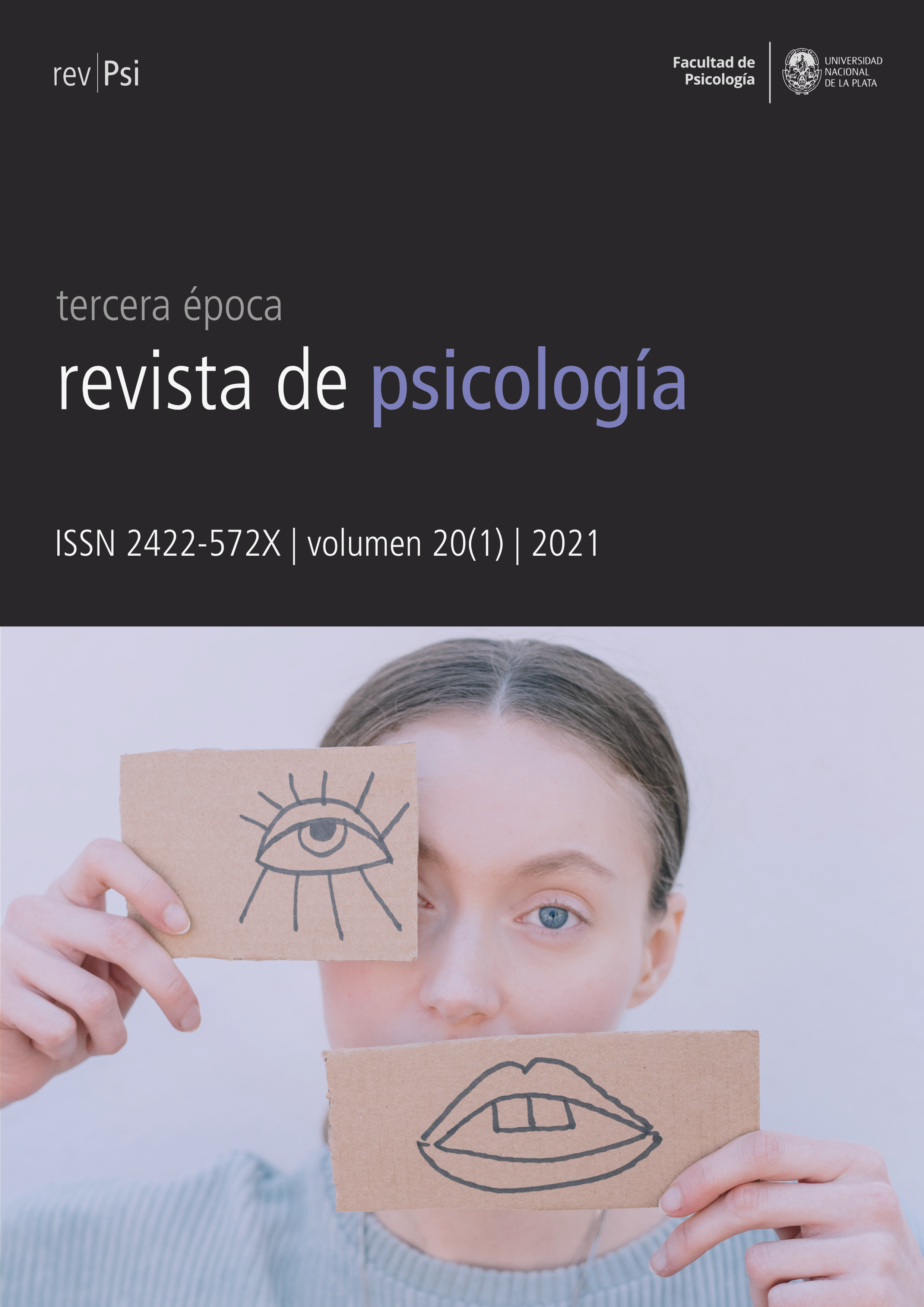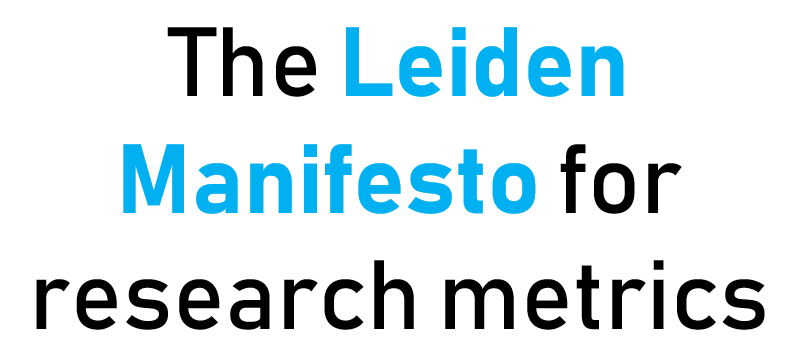Dimensions of analysis of personal memories as affective memories
DOI:
https://doi.org/10.24215/2422572Xe126Keywords:
personal memory, affectivity, emotion, intentionality, affective perspectiveAbstract
Recent research in cognitive psychology has studied the different ways in which emotions influence memory, without delving into the understanding of the way in which emotional, affective and mnemonic aspects are closely intertwined in an act of recollection. In this article, I develop a conceptual framework of analysis that conceives personal memories as being essentially affective memories. The framework displays two continuous and independent variables: on the one hand, the intentionality of the memory, that is, the object towards which the memory is directed, which can be descriptive or evaluative; on the other hand, the affective perspective of the memory, which can fluctuate from the first person to the third person perspective. These two dimensions are analyzed in depth, and the limitations of this framework and future research directions are also presented.
Downloads
Metrics
References
Alea, N. y Bluck, S. (2003). Why are you telling me that? A conceptual model of the social function of autobiographical memory. Memory, 11(2), 165-178. https://doi.org/10.1080/741938207
Alexander, K. W. y O’Hara K. D. (2009). An integrated model of emotional memory: Dynamic transactions in development. En J. A. Quas, y R. Fivush (Eds.), Series in affective science. Emotion and memory in development: Biological, cognitive, and social considerations (pp. 221–255). Oxford University Press.
Allen P. A., Kaut K. P. y Lord R. R. (2008). Emotion and episodic memory. En E. Dere, A. Easton, L. Nadel y J. P. Huston (Eds.), Handbook of behavioral neuroscience, vol. 18 (pp. 115–132). Elsevier. http://dx.doi.org/10.1016/S1569-7339(08)00208-7
Aristóteles (350BC/1955). On memory and reminiscence. En su Parva naturalia (D. Ross, trad.). Clarendon Press.
Arnold, M. B. (1960). Emotion and personality. Columbia University Press.
Arnold, M. B. (1973). Historical development of the concept of emotion. Philosophical Studies, 22, 147-157. https://doi.org/10.5840/philstudies19732224
Barrett, L., Mesquita, B., Ochsner, K. y Gross, J. (2007). The experience of emotion. Annual Review of Psychology, 58, 373-403. https://doi.org/10.1146/annurev.psych.58.110405.085709
Barrett, L. (2017). Limbic system concept. En su How emotions are made: The secret life of the brain. Pan Macmillan. https://how-emotions-are-made.com/notes/Limbic_system_concept
Beike, D. Kleinknecht, E. y Wirth-Beaumont, E. (2004). How emotional and nonemotional memories define the self. In D. Beike, J. Lampinen y D. Behrend (Eds), The self and memory (pp. 141-159). Psychology Press.
Berntsen, D., y Rubin, D. C. (2002). Emotionally charged autobiographical memories across the life span: The recall of happy, sad, traumatic and involuntary memories. Psychology and Aging, 17(4), 636-652. https://doi.org/10.1037/0882-7974.17.4.636
Boals, A., Rubin, D. C. y Klein, K. (2008). Memory and coping with stress: The relationship between cognitive-emotional distinctiveness, memory valence and distress. Memory, 16(6), 637-657. https://doi.org/10.1080/09658210802083098
Boals, A. y Rubin, D. C. (2011). The integration of emotions in memories: Cognitive-emotional distinctiveness and Posttraumatic Stress Disorder. Applied Cognitive Psychology, 25, 811-816. https://doi.org/10.1002/acp.1752
Brewer, W. (1995). What is recollective memory? In D. Rubin (Ed.), Remembering our past. Studies in autobiographical memory (pp. 19-66). Cambridge University Press.
Brewin, C. y Holmes, E. (2003). Psychological theories of posttraumatic stress disorder. Clinical Psychology Review, 23, 339-376. https://doi.org/10.1016/s0272-7358(03)00033-3
Christianson, S. (Ed.) (1992). The handbook of emotion and memory: Research and theory. Erlbaum.
Claparède, E. (1911). La mémoire affective. Archives de Psychologie, 10, 361-377.
Colombetti, G. (2011). Varieties of pre-reflective self-awareness: foreground and background bodily feelings in emotion experience. Inquiry: An Interdisciplinary Journal of Philosophy, 54(3), 293-313. https://doi.org/10.1080/0020174X.2011.575003
Colombetti, G. (2013). The feeling body: Affective science meets the enactive mind. MIT Press.
Colombetti, G. y Ratcliffe, M. (2012). Bodily feeling in depersonalization: A phenomenological account. Emotion Review, 4(2), 145-150. https://doi.org/10.1177%2F1754073911430131
Conway, M. A. (2005). Memory and the self. Journal of Memory and Language, 53, 594-628. https://doi.org/10.1016/j.jml.2005.08.005
Conway, M. A. (2009). Episodic memories. Neuropsychologia, 47, 2305-2313. https://doi.org/10.1016/j.neuropsychologia.2009.02.003
D’Argembeau, A. y Van der Linden, M. (2006). Individual differences in the phenomenology of mental time travel: The effect of vivid visual imagery and emotion regulation strategies. Consciousness and Cognition, 15, 342-350. https://doi.org/10.1016/j.concog.2005.09.001
Damasio, A. R. (1994). Descartes’ error. Emotion, reason, and the human brain. Avon Books.
De Brigard, F. (2018). Nostalgia and mental simulation. En Gotlib, A. (Ed.) The moral psychology of sadness (pp. 155-181). Rowman & Littlefield.
Debus, D. (2007). Being emotional about the past: On the nature and role of past-directed emotions, Noûs, 41, 758-779. https://doi.org/10.1111/j.1468-0068.2007.00669.x
Dolan, R. J., Lane, R., Chua, P. y Fletcher, P. (2000). Dissociable temporal lobe activations during emotional episodic memory retrieval. Neuroimage, 11(3), 203-209. https://doi.org/10.1006/nimg.2000.0538
Dolcos F., LaBar K. S. y Cabeza R. (2004). Interaction between the amygdala and the medial temporal lobe memory system predicts better memory for emotional events. Neuron, 42(5), 855-863. https://doi.org/10.1016/s0896-6273(04)00289-2
Dudukovic, N., Marsh E. y Tversky B. (2004) Telling a story or telling it straight. The effects of entertaining versus accurate retellings on memory. Applied Cognitive Psychology, 18, 125-143. https://doi.org/10.1002/acp.953
Edwards D. y Middleton D. (1986). Joint remembering. Construing an account of shared experience through conversational discourse. Discourse Processes, 9, 423-459. https://doi.org/10.1080/01638538609544651
Fridja, N. (2013). Comment: The why, when and how of appraisal. Emotion Review, 5(2), 169-170. https://doi.org/10.1177/1754073912468905
Fox, E. (2018). Perspectives from affective science on understanding the nature of emotion. Brain and Neuroscience Advances, 2, 2398212818812628. https://doi.org/10.1177/2398212818812628
Goldie, P. (2000). The emotions. Clarendon Press.
Goldie, P. (2003). One’s remembered past: Narrative thinking, emotion, and the external perspective. Philosophical Papers, 32(3), 301-319. https://doi.org/10.1080/05568640309485129
Goldie, P. (2012). The mess inside: Narrative, emotion and the mind. Oxford University Press.
Gratadoux, E. (2009). El tercero y la terceridad en psicoanálisis. Revista Uruguaya de Psicoanálisis, 108, 108-135.
Greenberg, D. y Knowlton, B. (2014). The role of visual imagery in autobiographical memory. Memory & Cognition, 42, 922-934. https://doi.org/10.3758/s13421-014-0402-5
Griffiths, P. (2013). Current emotion research in philosophy. Emotion Review, 5, 215-222. https://doi.org/10.1177/1754073912468299
Habermas, T. (2006). Who speaks? Who looks? Who feels? Point of view in autobiographical narratives. The International Journal of Psychoanalysis, 87(2), 497-518. https://doi.org/10.1516/AXWM-QRNF-H69K-9K3C
Habermas, T. y Berger, N. (2011). Retelling everyday emotional events: Condensation, distancing, and closure. Cognition and Emotion, 25(2), 206-219. https://doi.org/10.1080/02699931003783568
Hacking, I. (1995) Rewriting the soul. Multiple personality and the sciences of memory. Princeton University Press.
Hamann, S. (2012). Mapping discrete and dimensional emotions onto the brain: Controversies and consensus. Trends in Cognitive Sciences, 16(9), 458-466. https://doi.org/10.1016/j.tics.2012.07.006
Harris, C. B., Keil, P. G., Sutton, J., Barnier, A. J. y McIlwain, D. J. (2011). We remember, we forget: Collaborative remembering in older couples. Discourse Processes, 48(4), 267-303. http://doi.org/10.1080/0163853X.2010.541854
Hatfield, E., Cacioppo, J. y Rapson, R. L. (1993). Emotional contagion. Current Directions in Psychological Science, 2(3), 96-99. https://doi.org/10.1111/1467-8721.ep10770953
Hatfield, E., Rapson, R. L. y Le, Y. L. (2009). Primitive emotional contagion: Recent research. En J. Decety y W. Ickes (Eds.), The social neuroscience of empathy (pp. 19-30). MIT Press.
Holland, A. y Kensinger, E. A. (2010). Emotion and autobiographical memory. Physics of Life Reviews, 7, 88-131. https://doi.org/10.1016/j.plrev.2010.01.006
Holmes, E. y Mathews, A. (2010). Mental imagery in emotion and emotional disorders. Clinical Psychology Review, 30, 349-362. https://doi.org/10.1016/j.cpr.2010.01.001
Howard, S. (2012). Nostalgia. Analysis, 72(4), 641-650. https://doi.org/10.1093/analys/ans105
Hyman, I. E. (1994). Conversational remembering. Story recall with a peer versus for an experimenter. Applied Cognitive Psychology, 8, 49-66. https://doi.org/10.1002/acp.2350080106
James, W. (1884). What is an emotion? Mind, 9(34), 188-205. https://www.jstor.org/stable/2246769
Kensinger, E. A. (2007). Age differences in memory for arousing and nonarousing emotional words. Journal of Gerontology: Series B, 63(1), P13-P18. https://doi.org/10.1093/geronb/63.1.p13
Kensinger, E. A. (2009). Remembering the details: Effects of emotion. Emotion Review, 1(2), 99-113. https://doi.org/10.1177/1754073908100432
Kensinger, E. A. y Schacter, D. L. (2006). Processing emotional pictures and words: Effects of valence and arousal. Cognitive, Affective, & Behavioral Neuroscience, 6(2), 110-126. https://doi.org/10.3758/CABN.6.2.110
Ketal, R. (1975). Affect, mood, emotion, and feeling: Semantic considerations. The American Journal of Psychiatry, 132(11), 1215-1217. https://doi.org/10.1176/ajp.132.11.1215
Kirchin, S. (Ed.) (2013). Thick concepts. Oxford University Press.
Koole, S. (2009). The psychology of emotion regulation: An integrative review. Cognition & Emotion, 23, 4-41. https://doi.org/10.1080/02699930802619031
Lambie, J. y Marcel A. (2002). Consciousness and the varieties of emotion experience: A theoretical framework. Psychological Review, 109(2), 219-259. https://doi.org/10.1037/0033-295x.109.2.219
Lamm, C., Bukowski, H. y Silani, G. (2016). From shared to distinct self–other representations in empathy: Evidence from neurotypical function and socio-cognitive disorders. Philosophical Transactions of the Royal Society B: Biological Sciences, 371, 20150083. https://doi.org/10.1098/rstb.2015.0083
Lang, P. J., Greenwald, M. K., Bradley, M. M. y Hamm, A. O. (1993). Looking at pictures: Affective, facial, visceral, and behavioral reactions. Psychophysiology, 30(3), 261-273. https://doi.org/10.1111/j.1469-8986.1993.tb03352.x
Lazarus, R. (1991). Progress on a cognitive-motivational-relational theory of emotion. American Psychologist, 46(8), 819-834. https://doi.org/10.1037//0003-066x.46.8.819
Lazarus, R. (2001). Relational meaning and discrete emotions. In K.R. Scherer, A. Schorr y T. Johnstone (Eds.), Appraisal processes in emotion: Theory, methods, research (pp. 37-67). Oxford University Press.
Lazarus, R. y Smith, C. (1988). Knowledge and appraisal in the cognition-emotion relationship. Cognition & Emotion, 2(4), 281-300. https://doi.org/10.1080/02699938808412701
LeDoux, J. E. (1993). Emotional memory systems in the brain. Behavioural Brain Research, 58(1-2), 69-79. https://doi.org/10.1016/0166-4328(93)90091-4
LeDoux, J. E. (1996). The emotional brain. Phoenix.
Levine, L. J. y Bluck, S. (2004). How emotions fade: Valence, appraisals, and the emotional impact of remembered events. En S. P. Shohov (Ed.), Advances in psychology research, vol. 30 (pp. 3-20). Nova Science Publishers.
Levine, L. J. y Edelstein, R. S. (2009). Emotion and memory narrowing: A review and goal relevance approach. Cognition & Emotion, 23, 833-875. https://doi.org/10.1080/02699930902738863
Levine, L. J., Prohaska, V., Burgess, S. L., Rice, J. A. y Laulhere, T. M. (2001). Remembering past emotions: The role of current appraisals. Cognition & Emotion, 15(4), 393-417. https://doi.org/10.1080/02699930125955
Libby, L. y Eibach, R. (2002). Looking back in time. Self-concept change affects visual perspective in autobiographical memory. Journal of Personality and Social Psychology, 82(2), 167-179. https://doi.org/10.1037/0022-3514.82.2.167
Lindquist, K., Wager, T., Kober, H., Moreau, E. y Barret, L. (2012). The brain basis of emotion: A meta-analytic review. Behavioral and Brain Sciences, 35, 121-202. https://doi.org/10.1017/S0140525X11000446
Locke, J. (1690/1994). Ensayo sobre el entendimiento humano (F. Romero, trad.). Fondo de Cultura Económica.
Marshall, D. y Weatherson, B. (2018). Intrinsic vs. extrinsic properties. En E. Zalta (Ed.), The Stanford Encyclopedia of Philosophy (Edición verano 2018). https://plato.stanford.edu/archives/spr2018/entries/intrinsic-extrinsic/
Martin, M. G. F. (1992). Perceptions, concepts and memory. The Philosophical Review, 101(4), 745-763. https://doi.org/10.2307/2185923
Mickley, K. R. y Kensinger, E. A. (2009). Phenomenological characteristics of emotional memories in younger and older adults. Memory, 17, 528-543. https://doi.org/10.1080/09658210902939363
Miranda, R. y Kihlstrom, J. (2005). Mood congruence in childhood and recent autobiographical memory. Cognition & Emotion, 19(7), 981-998. https://doi.org/10.1080/02699930500202967
Moors, A., Scherer, K., Ellsworth, P. y Frijda, N. (2013). Appraisal theories of emotion: State of the art and future development. Emotion Review, 5(2), 119-124. https://doi.org/10.1177/1754073912468165
Mulligan, K. y Scherer, K. (2013). Towards a working definition of emotion. Emotion Review, 4(4), 345-357. https://doi.org/10.1177/1754073912445818
Pasupathi, M., Lucas, S. y Coombs, A. (2002). Conversational functions of autobiographical remembering: Long-married couples talk about conflicts and pleasant topics. Discourse Processes, 34(2), 163-192. https://doi.org/10.1207/S15326950DP3402_3
Patihis, L., Cruz, C. S. y Herrera, M. E. (2019). Changing current appraisals of mothers leads to changes in childhood memories of love toward mothers. Clinical Psychological Science, 7(5), 1125-1143. https://doi.org/10.1177/2167702619842468
Paulhan, F. (1903). Sur la mémoire affective (suite et fin). Revue Philosophique de la France et l’Etranger, 55, 42-70.
Pérez, D. I. y Gomila, A. (en prensa). Social cognition and the second person in human interaction. Routledge.
Pessoa, L. (2008). On the relationship between emotion and cognition. Nature, 9, 148-158. https://doi.org/10.1038/nrn2317
Phelps, E. A. (2004). Human emotion and memory: interactions of the amygdala and hippocampal complex. Current Opinion in Neurobiology, 14(2), 198-202. https://doi.org/10.1016/j.conb.2004.03.015
Phelps, E.A. y Sharot, T. (2008). How (and why) emotion enhances the subjective sense of recollection. Current Directions in Psychological Science, 17(2), 147-152. https://doi.org/10.1111/j.1467-8721.2008.00565.x
Philippot, P. y Schaefer, A. (2001). Emotion and memory. En T. J. Mayne y G. A. Bonanno (Eds.), Emotions: Current issues and future directions (pp. 82-122). The Guilford Press.
Prinz, J. (2004). Gut reactions. Oxford University Press.
Reinhold, N. y Markowitsch, H. (2009). Retrograde episodic memory and emotion: A perspective from patients with dissociative amnesia. Neuropsychologia, 47, 2197-2206. https://doi.org/10.1016/j.neuropsychologia.2009.01.037
Reisberg, D. y Hertel, P. (Eds.) (2004). Memory and emotion. Oxford University Press.
Reisberg, D. y Heuer, F. (2004). Memory for emotional events. En D. Reisberg y P. Hertel (Eds.), Memory and emotion (pp. 3-41). Oxford University Press.
Ribot, T. (1907). La mémoire affective. Nouvelles remarques. Revue Philosophique de la France et l’Etranger, 64, 588-613.
Rimmele, U., Davachi, L., Petrov, R., Dougal, S. y Phelps, E.A. (2011). Emotion enhances the subjective feeling of remembering despite lower accuracy for contextual details. Emotion, 11(3), 553-562. https://doi.org/10.1037/a0024246
Rubin, D. (2006). The basic-systems model of episodic memory. Perspectives on Psychological Science, 1(4), 277-311. https://doi.org/10.1111/j.1745-6916.2006.00017.x
Rubin, D. y Kozin, M. (1984). Vivid memories. Cognition, 16(1), 81-95. https://doi.org/10.1016/0010-0277(84)90037-4
Russell, J. A. (1980). A circumplex model of affect. Journal of Personality and Social Psychology, 39(6), 1161-1178. https://doi.org/10.1037/h0077714
Russell, J. A. y Barrett, L. (1999). Core affect, prototypical emotional episodes, and other things called. emotion: Dissecting the elephant. Journal of Personality and Social Psychology, 76(5), 805-819. https://doi.org/10.1037//0022-3514.76.5.805
Rusting, C. L. y DeHart, T. (2000). Retrieving positive memories to regulate negative mood: Consequences for mood-congruent memory. Journal of Personality and Social Psychology, 78, 737-752. https://doi.org/10.1037//0022-3514.78.4.737
Scheff, T. (1981). The distancing of emotion in psychotherapy. Psychotherapy: Theory, Research and Practice, 18(1), 46-53. https://doi.org/10.1037/h0085960
Sedikides, C., Wildschut, T., Arndt, J. y Routledge, C. (2008). Nostalgia: Past, present and future. Current Directions in Psychological Science, 17(5), 304-307. https://doi.org/10.1111/j.1467-8721.2008.00595.x
Singer, T. y Tusche, A. (2014). Understanding others: Brain mechanisms of theory of mind and empathy. En P. Glimcher y E. Fehr (Eds.), Neuroeconomics: Decision making and the brain (pp. 513-532). Academic Press. https://doi.org/10.1016/B978-0-12-416008-8.00027-9
Sutton, J. (2010). Observer perspective and acentred memory: Some puzzles about point of view in personal memory. Philosophical Studies, 148(1), 27-37. https://www.jstor.org/stable/40606313
Tenney, Y. (1989). Predicting conversational reports of a personal event. Cognitive Science, 13, 213-233. https://doi.org/10.1016/0364-0213(89)90004-9
Trakas, M. (2015). Personal memories. Tesis doctoral inédita, Macquarie University y Ecole des hautes études en sciences sociales. http://hdl.handle.net/1959.14/1069913
Trakas, M. (2019). On epistemic responsibility while remembering the past: The case of individual and historical memories. Les Ateliers de l’Éthique / The Ethics Forum, 14(2), 240-273. https://doi.org/10.7202/1071139ar
Trakas, M. (2021). No trace beyond their name? Affective memories, a forgotten concept. L’Année Psychologique, 121(2), 129-173. https://doi.org/10.3917/anpsy1.212.0129
Tulving E. (1972). Episodic and semantic memory. En E. Tulving and W. Donaldson (Eds.), Organization of memory (pp. 381-402). Academic Press.
Tye, M. (2008). The experience of emotion: An intentionalist theory. Revue Internationale de Philosophie, 243(1), 25-50. https://doi.org/10.3917/rip.243.0025
Williams, B. (1985). Ethics and the limits of philosophy. Routledge.
Wollheim, R. (1984). The thread of life. Cambridge University Press.
Wright, D. y Gaskell, G.D. (1992). The construction and function of vivid memories. En M.A. Conway, D.C. Rubin, H. Spinnler y W. Wagenaar (Eds.). Theoretical perspectives on autobiographical memory (pp. 275-293). Kluwer Academic Publisher.
Yonelinas, A. P. y Ritchey, M. (2015). The slow forgetting of emotional episodic memories: An emotional binding account. Trends in Cognitive Sciences, 19(5), 259-267. https://doi.org/10.1016/j.tics.2015.02.009
Downloads
Published
How to Cite
Issue
Section
License
![]()
Authors who publish in this journal accept the following conditions:
- Authors retain the copyright and assign the right of first publication to the journal, with the work registered under a Creative Commons attribution license (CC-BY), which allows third parties to use what is published whenever they mention the authorship of the work and the first publication in this magazine.
- Authors can make other independent and additional contractual agreements for the non-exclusive distribution of the article published in this journal (e.g., include it in an institutional repository or publish it in a book) as long as they clearly indicate that the work was published for the first time in this magazine.
- Authors are allowed and encouraged to publish their work on the Internet (e.g., on institutional or personal webpages) before and during the review and publication process, as it can lead to productive exchanges and greater and faster dissemination of published work (see The Effect of Open Access ).





































